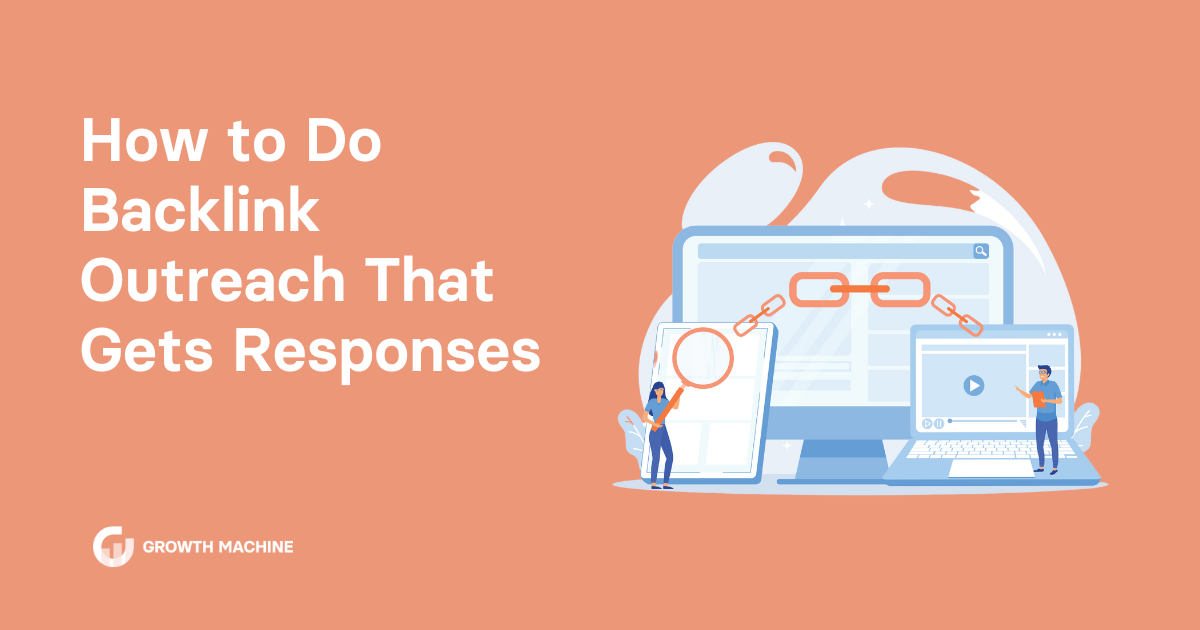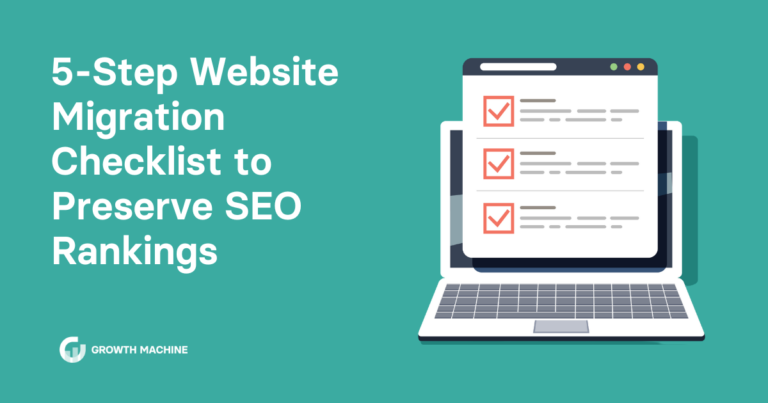How to Do Backlink Outreach That Gets Responses
You’ve created a thoughtful, search-optimized piece of content. Great! Now it’s time to start telling people about it. And to many digital marketers, climbing the search engine rankings feels like a continuous battle. One of the most effective weapons in this battle is backlink outreach or outreach link building. An effective link building strategy can make all the difference between online obscurity and visibility.
This guide will reveal the intricacies of backlink outreach and provide a step-by-step guide to securing high-quality links for your business.
What Is Backlink Outreach?
Backlink outreach refers to the process of contacting other websites to secure a link back to a page on your own website. These backlinks send digital signals to search engines that your site contains valuable information, which ultimately boosts your SEO ranking.
Backlink outreach is all about relationships. To succeed at backlink building, you need to develop and nurture connections with other websites in your niche. This involves careful planning, research, communication, and ultimately, trust.
P.S. If you’re a newbie to SEO link building, check out these 4 signs that you’re ready for SEO link building.
Why Backlinks Are Important for SEO
High-quality backlinks are the foundation of any good SEO strategy. They’re incredibly valuable for several reasons.
Backlinks Act as Recommendations
Think of backlinks as endorsements from other websites. Each link to your site acts as a vote of confidence, signaling to search engines that your content is trustworthy and valuable. The more quality backlinks you have, the higher your site’s credibility.
Backlinks Drive Organic Traffic
Backlinks play a pivotal role in driving organic traffic to your website. A backlink from a high-traffic website not only leads site visitors to your site (aka referral traffic), but search engines like Google also use backlines as a key factor in determining the relevance and quality of your site.
Boosting your credibility with Google can result in higher rankings on search engine results pages (SERPs), amplifying the amount of organic traffic your site receives.
Backlinks Increase Visibility and Page Indexing
If the increased organic traffic wasn’t enough of a perk, backlinks for reputable websites can also help search engines find and index your pages faster.
The faster a search engine can index your site, the quicker you’ll see pages start ranking for relevant search keywords, which also creates greater visibility for your business.
How to Identify Relevant Websites for Backlink Outreach
As in any relationship, choosing the right partner for your link building outreach is not a task that should be taken lightly.
Poor-quality backlinks from spammy or unrelated sites might even harm your SEO efforts, undoing hours of hard work and effort you put into creating quality content. Google can penalize your site if it’s linked from these dubious sources, so it’s best to stick with reputable ones.
Here are some things to consider when choosing a backlink partner.
Consider Your Industry/Niche
How well do you know your target audience? Consider which websites, bloggers, or influencers are their go-tos for information related to your niche.
These are the websites that are likely to drive traffic, because people are already interested in what you have to offer.
We recommend starting here because not only do they have a high level of reach and can drive amazing results for your business, but you can also use them as social proof later on when reaching out to other websites. Search engines will also prioritize backlinks from closely related sources, so shoot for the most well-known websites first and build from there.
Check Out Your Competitors
The backlink profiles of your competitors are a gold mine of valuable insights for SEO.
Tools like Ahrefs, Moz, and Semrush all have features that allow you to see who’s linking to your competitors. Take notes, because those are potential partners you’ll definitely want to target.
Assess Domain Authority
Domain authority is typically a score from 1 to 100 that predicts how well a website will rank on a SERP. It can be calculated using Ahrefs, Moz, or Semrush.
In your outreach process, focus on websites with strong DA, or 50 and above, as potential backlink partners. Higher DA sites tend to be more established and have greater authority, which means a backlink from them can be your ticket to climbing the SERPs faster.
Review Your Partner’s Backlink Policy
Many popular websites and blogs will explicitly mention their backlink policy on their website. And while many webpages welcome outreach, others may be more closed off.
It’s worth checking to see if any potential partner has a backlink policy on their site before reaching out, in case there are any specific protocols or details you need to be aware of.
5 Steps to Build Successful Backlink Relationships
Creating a robust backlink profile for your business isn’t just a game of numbers. It’s about cultivating intentional relationships with potential partners.
Here’s how to take a holistic, relationship-focused approach to your link building.
1. Determine Who You’ll Reach Out To
Before you even start your outreach, remember that there’s a real person on the other end. You’ll need to do a bit of detective work to figure out exactly who that person is and if they have the authority to approve your backlink request.
In the case of well-known bloggers or influencers, you’ll usually reach out to that individual directly. Other times, it’s not quite as obvious. Here are some steps to guide you in the case of the latter:
- Author information: If the website primarily shares blog content, the author of a recent blog post is a great place to start.
- LinkedIn: When it comes to finding a specific person or role within a company, LinkedIn is the best place to go. Searching for roles like Content Manager, SEO Specialist, Editor, or Webmaster will point you in the right direction.
- Email lookup tools: Tools like Hunter.io or ZoomInfo are a sneaky way to find all the email addresses and job titles associated with a particular domain.
- Contact Us or About Us pages: Sometimes, a simple visit to the website can give you all the clues you need. As a last resort, you can try a general contact email (e.g., info@website.com) or fill out the contact form to find the appropriate contact.
2. Engage With Their Content
A great place to start is to interact with your prospective link partner’s content.
This can be done in the blog comment section (if they have one), or on social media networks like Instagram, X, or LinkedIn.
You can even go so far as to send them a DM with a note of appreciation for a piece of content that deeply resonated with you. This establishes initial contact and puts you on their radar for when the time comes to send your outreach emails.
3. Get Personal
Most of us would agree that we prefer to associate with people, not faceless entities or machines. The same is true for link building.
Don’t shy away from showing off your personality in your outreach interactions. For example, you could establish initial contact by finding some common ground, such as a relevant topic in your industry or sharing an interest you know you both have in common.
Letting your personality shine through and showing off a more human side of your business goes a long way in any potential relationship.
4. Keep in Touch
Relationship-building is a long game. And just like all relationships in life, regular communication is key.
Meaningful interactions and engagements over time will trump bombarding people with emails any day of the week. For instance, you can reach out when the potential partner publishes an excellent blog post, achieves a significant career milestone (LinkedIn is great for this as well), or even on special occasions like birthdays and holidays.
5. Work With a Backlink Outreach Partner
Backlink outreach is a complex process that requires continuous effort. It takes patience and dedication, which can be time-consuming.
At Growth Machine, we love to dig into where your value lies and turn that into backlink outreach campaigns that align with your goals. Our team are experts at securing high-quality backlinks and ultimately, more organic traffic for your business.
And we’ve got the numbers to back it up. Check out how we added 120K+ monthly organic sessions in only 10 months for our client with quality content and a link building campaign. Our client saw rapid growth of their site authority thanks in part to backlinking.
How to Craft Effective Backlink Outreach Emails
Cold outreach can be intimidating, but it’s a necessary part of any link building outreach.
Odds are that the bloggers or writers you’re contacting are probably busy people. Especially if they run a blog with a large following, you’ll only have limited time and word counts to pique their interest.
Your link building email should contain enough detail to explain why they should care, but keep it succinct to avoid losing them.
Here’s our recommended email flow to help you craft messages that will get more responses.
1. A Personalized Opening
The first few lines of your email are your chance to really hook your reader. Though it may only be a couple of sentences, it’s worth taking the time to make sure it’s unique and customized to them to grab their attention.
Consider how you would approach this person if you met them at a real-life event. How would you open the conversation?
Here are a few tips to help personalize your opening:
- Use a compelling subject line: Before the blog owner even opens your email, they’ll make a snap judgment about it based on your subject line. A poorly crafted subject line can also trigger spam filters and result in your email being marked as spam, so proceed with caution. The best subject lines are short, to the point, and mention the name of the blog or website.
- Address the recipient by name: If you can’t find their exact name, a simple “hi there” will work, but avoid things like “Hey Webmaster” or “Hi blog owner.” These greetings scream spam.
- Mention or compliment their work: Be specific! Simply stating you’re a fan of their blog won’t do it. Instead, you can cite a recent blog post of theirs that resonated with you, a recent comment or social media post, or even find common ground by perusing their “about” page for their personal interests.
- Use a professional email address: If you haven’t already, this is the time to retire your high school Hotmail address. A business domain is preferred and demonstrates that you’re a professional.
2. Clear Value Proposition
This is the most important part of your cold email — tell them why they should care about your content.
A good rule of thumb when reaching out to website owners and bloggers is to never assume that anyone owes you anything.
After all, those same bloggers are probably receiving all sorts of offers daily. Your job as an SEO marketer is to tell them why you deserve their attention and support.
Whether it’s guest posting or reciprocal links, show them how the relationship can be mutually beneficial.
This is a great point to pause and do a gut-check on your content. Be honest — does the content truly add value? Is it shareable and will the website owner or influencer’s audience gain value from it? If your content is similar or adds to one of their blog posts, use that to help support your case.
If not, it might be time to revisit your content strategy and see where you can make improvements.
3. Clear Call to Action
There’s nothing worse than receiving an email that boasts about how great a person’s work is, without getting to the root of what the sender actually wants.
The best way to cut through the noise is to clearly tell people what action you want them to take. Avoid sending the exact link in this initial email to avoid the blogger flagging the email as spam.
Here are some great examples of calls to action:
- Sharing your content on their social media pages
- Embedding a snippet from your content directly (this works best for infographics, videos, or social media posts like Tweets)
- Posting your blog article as a guest post and linking back to the original
- The blogger writing a follow-up or opinion piece on your content (more work on their part, but could be a great fit, depending on the blog topic)
The best part is that these options aren’t mutually exclusive. For instance, sharing the content on social media and posting the article as a guest post will build your authority and extend your reach much further than each action alone.
4. Sign Off With a Proper Email Signature
Your goal should always be to make the blog owner’s job as easy as possible. That starts with being able to contact you. Include your full name, job title, the URL of the blog or website you represent, your phone number, and links to your business’s social media accounts (where applicable).
5. Nail the Follow Up
Persistence pays! Sometimes a gentle reminder is all you need to secure a quality backlink.
Remember that high-ranking website owners and bloggers get inundated with requests constantly. It’s entirely possible that your initial outreach email may have been missed or overlooked in a crowded inbox.
By sending a follow-up, you increase the chances of your email being seen and responded to, and demonstrate that you’re genuinely interested in collaborating, not merely mass emailing for links.
Grow Faster With an Experienced Backlink Outreach Partner
Backlink outreach is so much more than just another SEO strategy. From the content you write to the relationships you build, every step should be executed with precision and purpose.
Sounds daunting? Don’t worry – Growth Machine is here to help!
With years of outreach link building campaigns under our belt and a relentless focus on quality, Growth Machine can take your SEO game to new heights.
Ready to elevate your backlink outreach without having to do the outreach yourself? Reach out to Growth Machine and ask about our link building packages.







